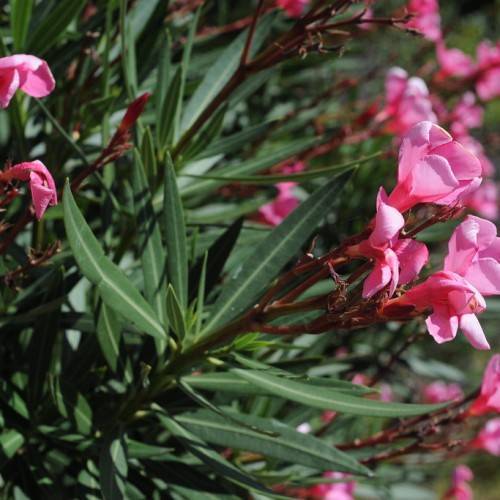
oleander
Nerium oleander
Also Known As - rose bayCycle:
Perennial
Watering:
Frequent
Hardiness Zone:
8 - 10
Flowers:
Flowers In Summer
Sun:
Full sun
Soil:
Humus rich, Well-drained
Fruits:
Fruits In Autumn Ready In Summer
Leaf:
Yes
Growth Rate:
High
Maintenance:
Low
Poisonous To Humans:
Yes
Poisonous To Pets:
Yes
Drought Tolerant:
Yes
Salt Tolerant:
Yes
Thorny:
Yes
Invasive:
Yes
Tropical:
Yes
Care Level:
High
watering
Oleander (Nerium oleander) should be watered twice a week, providing about 1 inch of water each time. The key is to not overwater the plant; be sure the soil is completely dry before watering again. During winter months, the watering needs may be less frequent since there is less evaporation, so monitor the soil moisture and only water when the soil appears dry.
sunlight
Oleander (Nerium oleander) plants grow best when they are exposed to full sunlight for at least 6 to 8 hours every day. Since oleander plants thrive in warmer climates, they should be placed in an area exposed to full sun to get the most benefit.
pruning
Oleanders should be pruned twice a year, once in the spring (March or April in most climates) and again in the summer (July or August). You should prune off dead and spent flower stalks, as well as cut out any dead wood or rubbing branches. Aim to remove up to 1-third of the overall size of the oleander each time you prune. This will help to open up the plant and increase air circulation, which can reduce possible disease issues.
